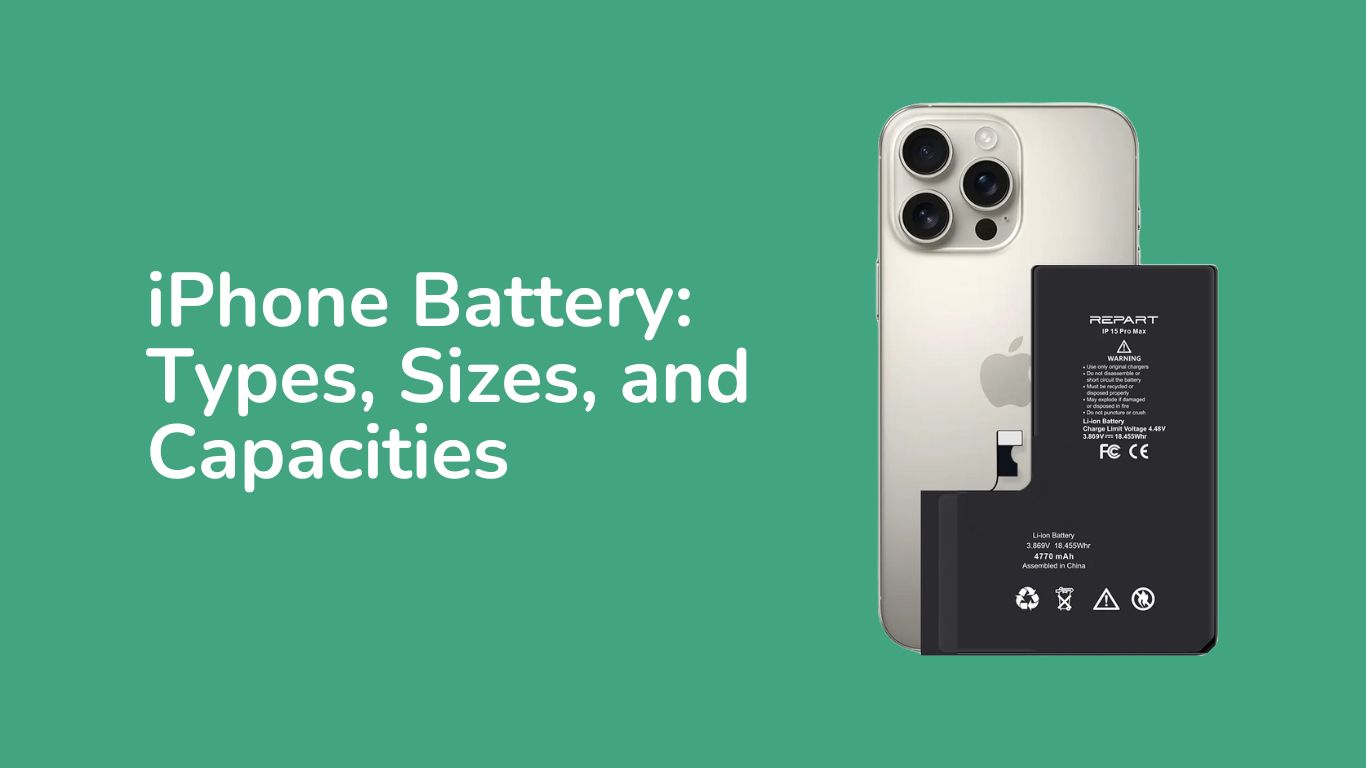iPhone Battery Evolution: Types, Sizes, and Capacities Across Every Model

Apple’s iPhone has consistently balanced sleek design with battery efficiency, often outperforming its Android rivals despite smaller capacities. This article dives deep into every iPhone model’s battery specifications, highlighting capacity (mAh), design innovations, and performance comparisons.
Understanding iPhone Battery Metrics
iPhone batteries are measured in milliampere-hours (mAh) and watt-hours (Wh). While mAh indicates charge capacity, Wh (calculated as mAh × voltage ÷ 1,000) better reflects stored energy. Apple’s lithium-ion batteries typically operate at ~3.6V, but advanced models like the MagSafe Battery Pack use higher voltages for faster charging.
iPhone Battery Evolution: Model-by-Model Breakdown
Early iPhones (2007–2013): Foundations of Efficiency
- Original iPhone (2007): 1400 mAh, 5.18 Wh – Set the baseline for compact energy storage.
- iPhone 3G/3GS: Dropped to 1150–1219 mAh but introduced 3G connectivity, straining early batteries.
- iPhone 4/4S: Slight increase (1420–1432 mAh) to support Retina displays and dual-core processors.
The Era of Larger Screens (2014–2017)
- iPhone 6/6 Plus: The 6 Plus (2915 mAh) nearly doubled capacity to power its 5.5-inch display.
- iPhone 7/7 Plus: Introduced water resistance and stereo speakers, with 1960 mAh (7) and 2900 mAh (7 Plus) batteries.
Modern Innovations (2017–2020)
- iPhone X/XS Max: The X’s 2716 mAh L-shaped battery optimized internal space, while the XS Max hit 3174 mAh.
- iPhone 11 Pro Max: A leap to 3969 mAh, the first to exceed 10 hours of screen time.
5G and Efficiency (2020–2024)
- iPhone 12 Series: The 12 Pro Max (3687 mAh) supports 5G but faces criticism for shorter lifespan.
- iPhone 13 Pro Max: Apple’s first 4000+ mAh battery (4352 mAh), delivering up to 28 hours of video playback.
- iPhone 15/16 Series: Incremental boosts, with the 15 Pro Max hitting 4422 mAh and the 16 Pro Max reaching 4685 mAh in 2024.
Key Design and Capacity Changes
- Size vs. Efficiency: Smaller iPhones like the 12 mini (2227 mAh) struggled with 5G drain.
- Battery Types: All iPhones use lithium-ion, but the MagSafe Battery Pack (11.13Wh, 1460 mAh) introduces high-voltage wireless charging.
- Pro Models: Despite similar capacities, the iPhone 14 Pro (3200 mAh) outperforms the 14 (3279 mAh) due to adaptive refresh rates.
- Stainless Steel Battery Shell: A new teardown video by REWA Tech shows Apple using stainless steel shells for its iPhone 16 battery.

Comparative Analysis: Standout Models
| Model | Capacity (mAh) | Notable Change vs. Predecessor |
|---|---|---|
| iPhone 6 Plus | 2915 | +109% vs. iPhone 6 |
| iPhone X | 2716 | L-shaped design for space efficiency |
| iPhone 13 Pro Max | 4352 | First >4000 mAh, +12% vs. 12 Pro Max |
| iPhone 16 Pro Max | 4685 | +6% vs. 15 Pro Max, 33-hour video |
Why Smaller Batteries Outperform
Apple’s integration of hardware (A-series chips) and software (iOS) enables unmatched efficiency:
- The iPhone 15 Pro (3274 mAh) lasts longer than the 14 Pro (3200 mAh) due to the A17 Pro’s 3nm architecture.
- The iPhone SE (2022) uses a 2018 mAh battery but lags in longevity due to older components.
-
Posted in
battery, battery features, iphone battery




